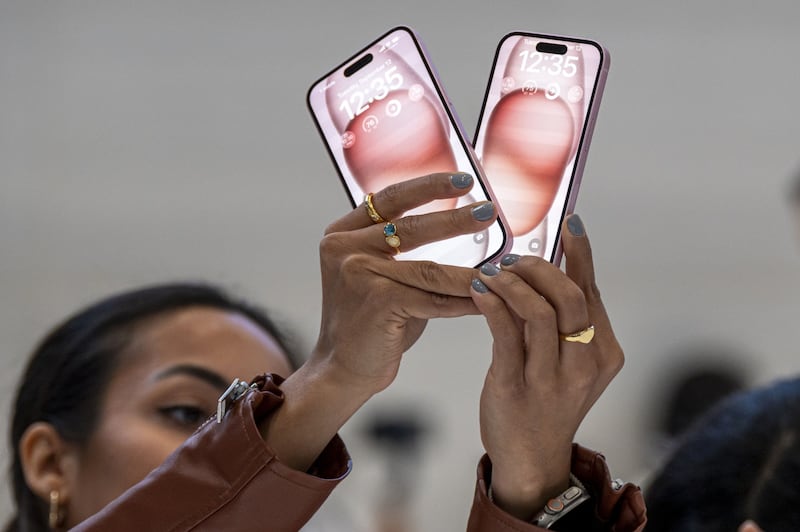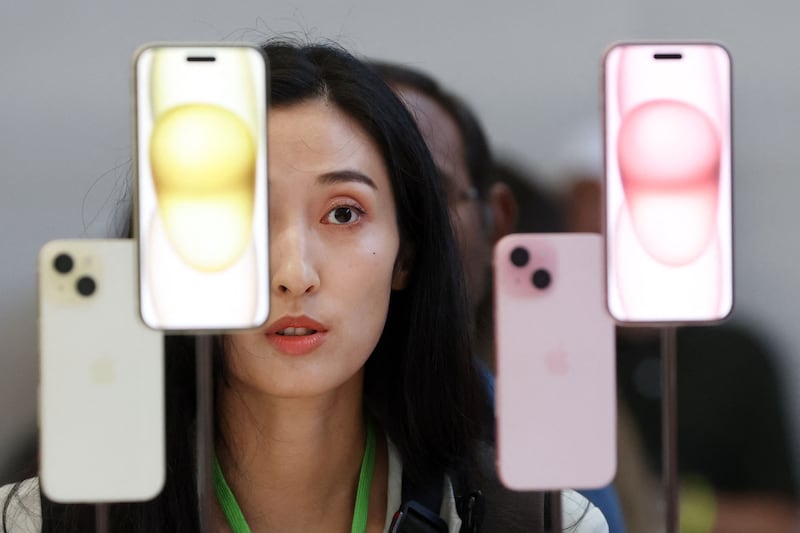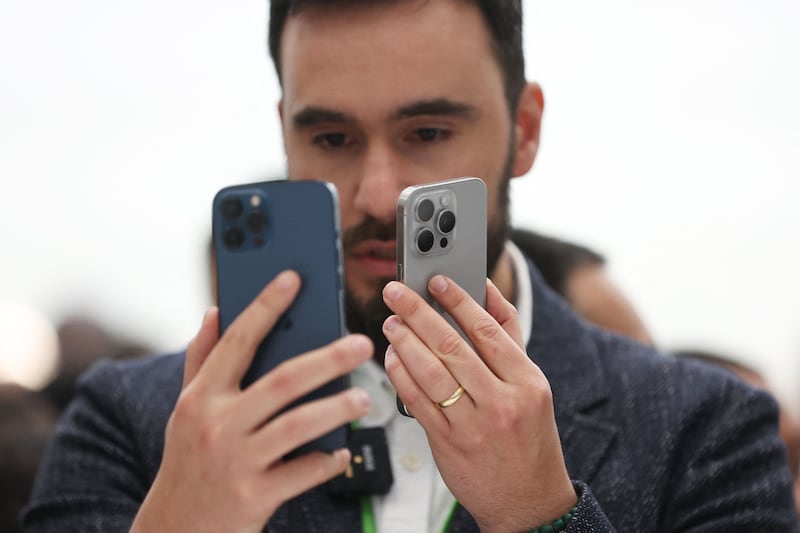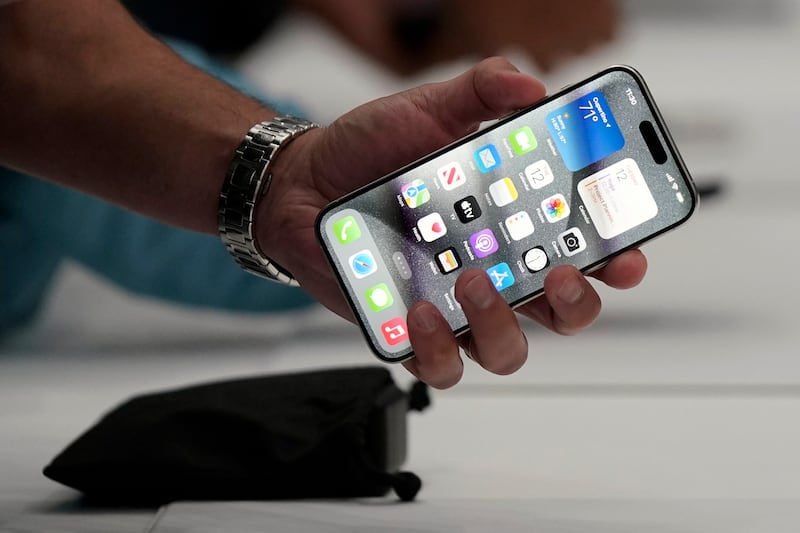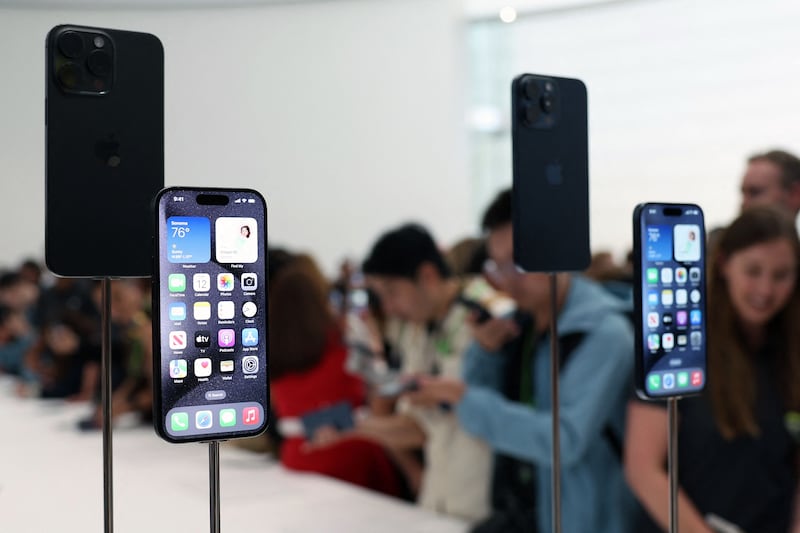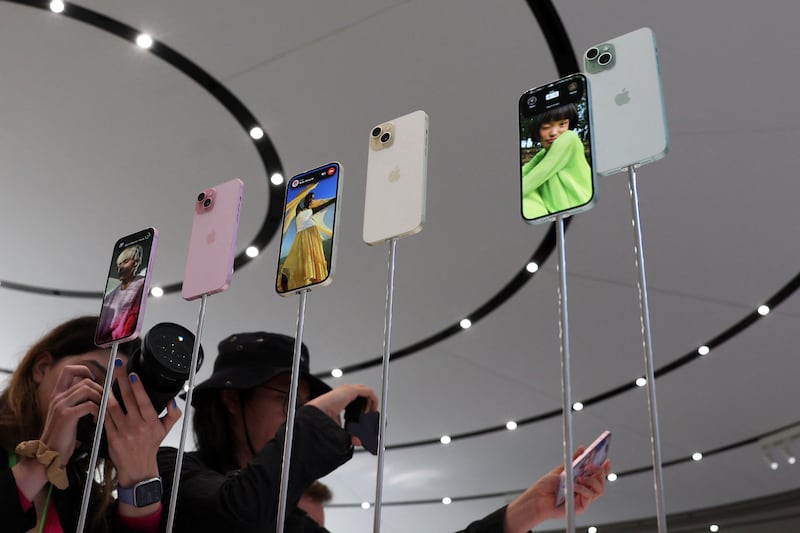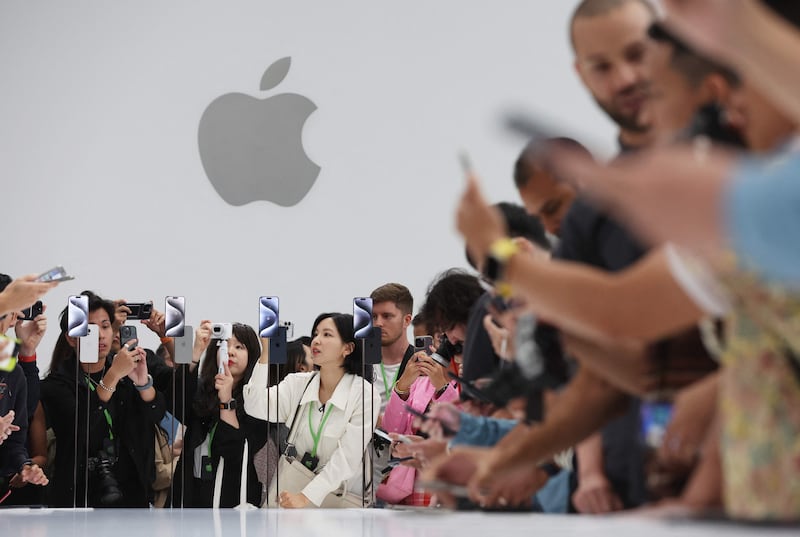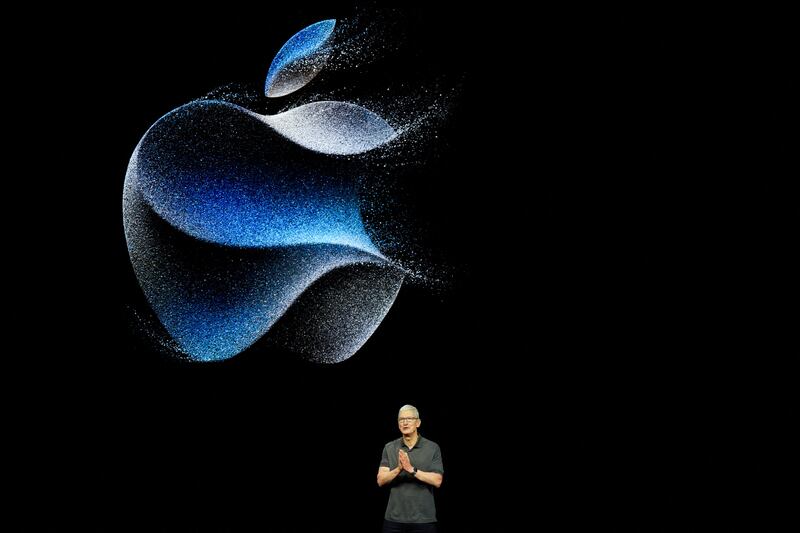Apple has unveiled its highly anticipated iPhone 15 series, which now come with USB-C connectivity, kicking off a new transition for the device that has redefined personal communications.
As expected, four new devices – the iPhone 15, iPhone 15 Plus, iPhone 15 Pro and iPhone 15 Pro Max – were introduced at the “Wonderlust” event, which was streamed from Apple's Cupertino headquarters in California on Tuesday.
The base iPhone 15 and iPhone 15 Plus now have Dynamic Island, the shape-shifting digital space that replaced the notch. Its dual-lens cameras now have a main 48MP sensor.
The top-end iPhone 15 Pro Max, meanwhile, now comes with the long-rumoured periscope camera, giving it 5x optical zoom, a hardware-based method to magnify images compared to the software-based digital zoom.
The Pro models' USB-C connection is at par with USB 3.0 standards for speeds up to 10Gbps, making it the first iPhones to use this innovation.
Apple did not raise prices on the new iPhones, with the iPhone 15, iPhone 15 Plus and iPhone 15 Pro remaining at $799, $899 and $999, respectively. The iPhone 15 Pro Max starts at $1,199 for the 256GB model.
“Since the very first iPhone, we've focused on giving our users a device that's incredibly powerful, remarkably easy to use and beautifully designed,” Tim Cook, chief executive of Apple, said at the event.
“Today, we're pushing what users love about iPhone even further.”
Apple's iPhone launches are must-see events, as they typically set the direction for the smartphone industry. The company is known to have its own versions of technologies that are already in the mainstream; Lightning was one of them, which was essentially Apple's version of USB-C.
It also uses AirDrop over Bluetooth for wireless transfers between its devices.
The switch to USB-C is the company's biggest hardware change since 2016, when it removed the 3.5mm audio port on the iPhone 7 in favour of headsets using its proprietary Lightning technology. That was the same year the original AirPods were introduced.
Five things we learnt from Apple's 2023 Wonderlust event
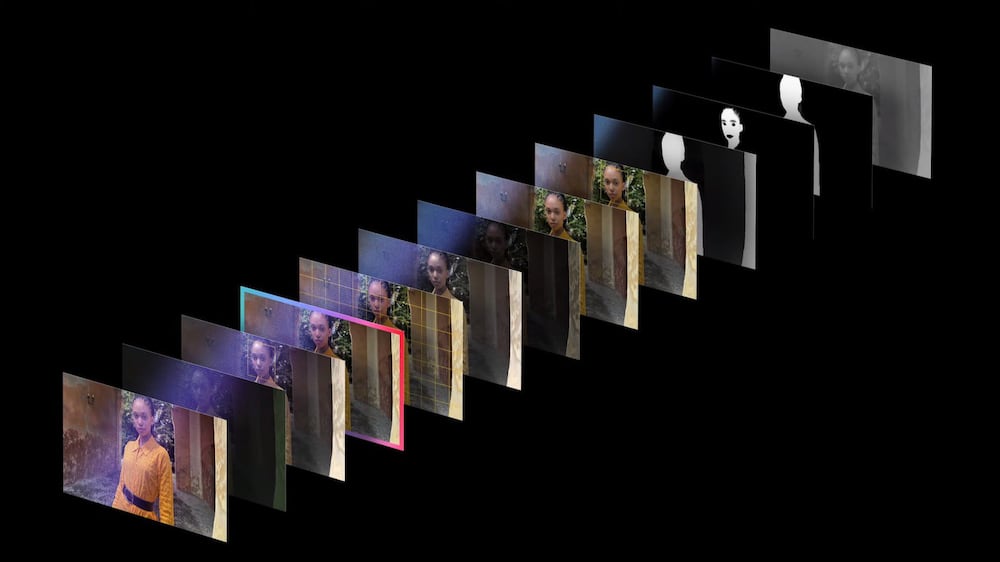
Rumblings of USB-C on iPhones began in 2018 when the company decided to, for the first time, use a USB-C port in that year's iteration of the iPad Pro. This gained further momentum when the EU started pushing for a common charger for technology devices in September 2021, which was eventually approved by the European Parliament in October 2022.
A few weeks after this decision, Apple senior vice president for worldwide marketing Greg Joswiak said Apple would comply, but did not give any specific time frame.
Apple is known to be very protective of its proprietary technology, but it would not want to risk legal complications, particularly with the EU, as well as disruptions to its supply chains and customer base.
There were initial reports that Apple would only use USB-C on iPhones to be distributed in the EU, but that could have posed a supply chain problem and created confusion among its users.
The company is also not afraid to go against the grain when it comes to killing off hardware parts previously deemed essential.
It removed the floppy disk drive from 1998's iMac G3, then ditched the optical drive – those that read compact discs – in the 2008 MacBook Air, before completely discontinuing its use in 2016.
And, of course, it did away with a physical keyboard on the original iPhone in 2007.
USB-C on the new iPhones, particularly in the Pro models, “enables new workflows not possible before”, said Sribalan Santhanam, vice president of Apple's silicon engineering group.
With the switch, Apple has completed the transition of its mainline categories to USB-C, which has already been in MacBooks since 2015 and iPads since 2018.
That leaves only the entry-level AirPods and AirPods Max still using Lightning, as an upgraded AirPods Pro with USB-C was also announced at the event. Bloomberg previously reported that USB-C would be coming to the base AirPods and AirPods Max next year.
Apple also unveiled Watch Series 9, which is Apple's first carbon-neutral product. It still comes in 41mm and 45mm sizes and comes with enhanced health and metrics features. It has been reported that Apple is preparing a major revamp for the Watch for its 10th anniversary next year.
The company also released an updated version of the high-end Watch Ultra. The premium wearable now comes with up to 3,000 nits of brightness, advanced metrics and GPS.
It's designed for extremes, “from the lowest valleys to the highest peaks”, said Daniela Deschamps, a product design engineer for the Apple Watch.
Shortly after Wonderlust concluded, Apple announced the second generation AirPods Pro, which was expected to be introduced at the event.
The wireless headset, also with a USB-C port, is now compatible with MagSafe wireless charging and has up to double the active noise cancellation capabilities of the original AirPods Pro, an advanced transparency mode and an expanded range of ear tip sizes, Apple said in a release received by The National.
